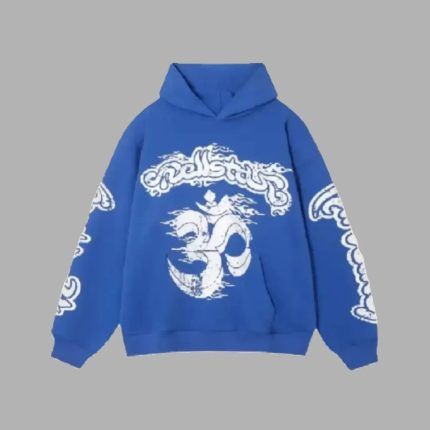Ecommerce Insights: A Guide to Understanding Consumer Behavior
Introduction
In the world of ecommerce, understanding consumer behavior is essential for driving success. Why? Because consumer behavior determines everything from how a visitor interacts with your website to whether or not they make a purchase. Ecommerce insights provide valuable data that helps businesses decode these behaviors, guiding decisions that can boost sales, improve customer satisfaction, and optimize marketing efforts. In this guide, we’ll explore how ecommerce insights can help you understand consumer behavior, and how you can use that information to elevate your online store’s performance.
What Are Ecommerce Insights?
Defining Ecommerce Insights
Ecommerce insights are the data-driven revelations that allow businesses to understand how consumers behave while shopping online. This includes tracking metrics such as the number of visitors to your website, how long they stay, which pages they view, and whether they complete a purchase or abandon their cart. By analyzing these behaviors, businesses can uncover patterns, preferences, and areas for improvement.
The Importance of Data in Ecommerce
Data is the foundation of understanding consumer behavior. Every action a consumer takes—whether it’s clicking on a product, reading a blog, or exiting a page—provides valuable information that can be analyzed to improve the overall shopping experience. By leveraging ecommerce insights, businesses can make data-backed decisions that lead to higher conversions, better customer experiences, and long-term growth.
Key Consumer Behavior Metrics
Conversion Rate
Conversion rate is one of the most important metrics in ecommerce. It measures the percentage of website visitors who complete a desired action, such as making a purchase. A low conversion rate indicates that while people are visiting your site, they aren’t completing the transaction. Analyzing why this is happening, such as unclear calls to action or complex checkout processes, can help businesses make improvements.
Bounce Rate
Bounce rate refers to the percentage of visitors who leave your website after viewing only one page. A high bounce rate can signal that visitors aren’t finding what they’re looking for or that the user experience needs improvement. Ecommerce insights can show which pages have the highest bounce rates, allowing businesses to optimize them for better engagement.
Average Order Value (AOV)
AOV is the average amount spent by customers in a single transaction. Increasing AOV through techniques like cross-selling, upselling, and offering discounts on bulk purchases can have a significant impact on overall revenue.
Cart Abandonment Rate
The cart abandonment rate shows the percentage of customers who add items to their cart but don’t complete the purchase. High cart abandonment is a common issue in ecommerce, but by understanding why it happens—whether it’s due to unexpected shipping costs or a complicated checkout process—businesses can reduce this number and recover lost sales.
How to Use Consumer Behavior Insights
Personalizing the Shopping Experience
One of the most powerful ways to use consumer behavior insights is by personalizing the shopping experience. Analyzing past purchases, browsing history, and demographic data allows businesses to tailor product recommendations, create targeted marketing campaigns, and offer promotions that resonate with individual customers. Personalization can significantly increase conversion rates and build long-term customer loyalty.
Improving the Customer Journey
Understanding how consumers navigate through your website helps identify pain points and areas for improvement. By analyzing click paths, time spent on specific pages, and exit points, businesses can optimize the user experience, making it easier for customers to find what they need and complete a purchase.
Optimizing Pricing Strategies
Consumer behavior insights can also help businesses fine-tune their pricing strategies. For example, tracking how customers react to discounts, promotions, and pricing changes provides valuable data for setting prices that encourage purchases while maintaining profitability.
Tools to Track Consumer Behavior
Google Analytics for Traffic Insights
Google Analytics is a powerful tool for tracking website traffic, user demographics, and on-site behavior. It allows businesses to monitor how visitors interact with their website, which pages are most popular, and how visitors progress through the sales funnel.
Shopify Analytics for Sales Data
For businesses using Shopify, the platform’s built-in analytics provide a wealth of data on sales performance, product performance, and customer behavior. Shopify’s analytics tools can be used to track conversion rates, customer lifetime value, and average order value.
Heatmap Tools Like Hotjar for User Interaction
Heatmap tools like Hotjar allow businesses to visually track where users are clicking, scrolling, and interacting with a website. This information helps identify which areas of the website are engaging users and which might be causing friction.
Behavioral Patterns in Ecommerce
How Consumers Browse and Shop Online
Consumers often take a non-linear path to purchase, browsing multiple products, comparing prices, and reading reviews before making a decision. Understanding these browsing patterns helps businesses optimize their website structure, product pages, and navigation.
The Influence of Mobile Shopping on Behavior
Mobile shopping is on the rise, and consumer behavior on mobile devices is different from desktop. Mobile shoppers tend to have shorter attention spans and expect a seamless, fast experience. Ecommerce insights can reveal how mobile users interact with your store and highlight areas where the mobile experience needs improvement.
Seasonal Shopping Trends
Consumer behavior can vary significantly depending on the time of year. For example, people tend to shop more during the holiday season, while certain categories see spikes in demand during specific seasons. By analyzing seasonal trends, businesses can plan inventory, marketing campaigns, and promotions accordingly.
Personalization and Its Role in Consumer Behavior
How Data Personalization Increases Customer Loyalty
Personalized experiences make customers feel valued, which fosters loyalty and repeat purchases. By offering personalized product recommendations, tailored content, and relevant promotions, businesses can create a more engaging shopping experience that encourages customers to come back.
Examples of Successful Personalization Strategies
Major ecommerce players like Amazon and Netflix use data-driven personalization to keep customers engaged. For example, Amazon’s recommendation engine is responsible for driving a significant portion of its sales by offering personalized suggestions based on past purchases and browsing behavior.
How to Reduce Cart Abandonment Using Behavioral Data
Common Reasons for Cart Abandonment
High shipping costs, long delivery times, and complicated checkout processes are some of the most common reasons for cart abandonment. By using behavioral insights to identify the exact points where customers abandon their carts, businesses can address these issues and implement solutions such as offering free shipping or streamlining the checkout process.
Using Data to Improve Checkout Processes
Data from cart abandonment analysis can be used to simplify the checkout process. For example, removing unnecessary steps, offering guest checkout options, and providing clear shipping and return policies can help reduce friction and encourage customers to complete their purchases.
How Consumer Behavior Influences Marketing Strategies
Targeted Advertising Based on Behavior
Behavioral data allows businesses to create highly targeted ads that resonate with specific customer segments. By understanding what products customers are interested in, businesses can tailor their advertising to show relevant offers, leading to higher click-through rates and conversions.
Using Retargeting Campaigns to Recover Lost Customers
Retargeting campaigns are an effective way to bring back customers who have abandoned their carts or visited the site without making a purchase. By serving personalized ads based on previous interactions, businesses can re-engage these customers and encourage them to return to the site and complete their purchase.
The Role of AI in Understanding Consumer Behavior
Predicting Consumer Preferences Using AI
AI and machine learning technologies can analyze vast amounts of data to predict future consumer behavior. For example, AI can identify which products a customer is likely to buy based on their browsing history and past purchases, allowing businesses to offer highly targeted product recommendations.
AI-Powered Chatbots for Enhanced Customer Engagement
AI-powered chatbots can provide personalized, real-time support to customers, answering questions, recommending products, and guiding them through the purchase process. These chatbots can analyze consumer behavior data to tailor their responses, making interactions more relevant and effective.
Case Studies of Brands Using Consumer Behavior Insights
Brand X’s Use of Data to Increase Conversion Rates
Brand X used behavioral data to identify a high bounce rate on its product pages. By analyzing user behavior, they discovered that unclear product descriptions were causing confusion. After improving the content and design of the product pages, the brand saw a 15% increase in conversion rates.
How Brand Y Reduced Cart Abandonment Using Behavior Insights
Brand Y implemented a data-driven strategy to reduce cart abandonment by simplifying their checkout process. They used behavioral insights to identify pain points in the customer journey, such as complicated forms and unclear shipping options. After streamlining the process, they reduced cart abandonment by 20%.
The Future of Consumer Behavior Analysis in Ecommerce
How Emerging Technologies Will Shape Consumer Behavior Insights
Emerging technologies such as AI, machine learning, and real-time data analytics will continue to transform the way businesses analyze consumer behavior. These tools will make it easier to predict future trends, personalize customer experiences, and make real-time adjustments to marketing and sales strategies.
Real-Time Behavioral Tracking for On-the-Fly Adjustments
Real-time behavioral tracking allows businesses to make immediate adjustments based on how customers are interacting with their website. For example, if data shows that customers are abandoning their carts at a particular point in the checkout process, businesses can quickly implement changes to improve the user experience.
Conclusion
Understanding consumer behavior is the key to success in ecommerce. By leveraging data-driven ecommerce insights, businesses can optimize the shopping experience, improve marketing strategies, and ultimately boost sales. Whether it’s tracking conversion rates, analyzing cart abandonment, or using AI to personalize the customer journey, insights into consumer behavior allow businesses to make smarter decisions that lead to long-term growth.
FAQs
How can ecommerce insights help me understand my customers?
Ecommerce insights provide data on customer behavior, such as browsing patterns, purchase history, and interaction with your website, helping you tailor your offerings and improve the shopping experience.
What tools are best for tracking consumer behavior?
Popular tools include Google Analytics, Shopify Analytics, and heatmap tools like Hotjar, which provide valuable insights into traffic, sales, and user interactions.
How can small businesses leverage consumer behavior data?
Small businesses can use free or affordable tools like Google Analytics and Shopify’s built-in analytics to track key metrics and optimize their marketing strategies.
What is the role of AI in analyzing consumer behavior?
AI can analyze vast amounts of data to predict consumer preferences, automate personalization, and improve customer engagement through tools like chatbots.
How can insights into consumer behavior reduce cart abandonment?
By understanding why customers abandon their carts—whether due to shipping costs, complex checkout processes, or other issues—businesses can make targeted improvements to encourage more completed purchases.







Post Comment